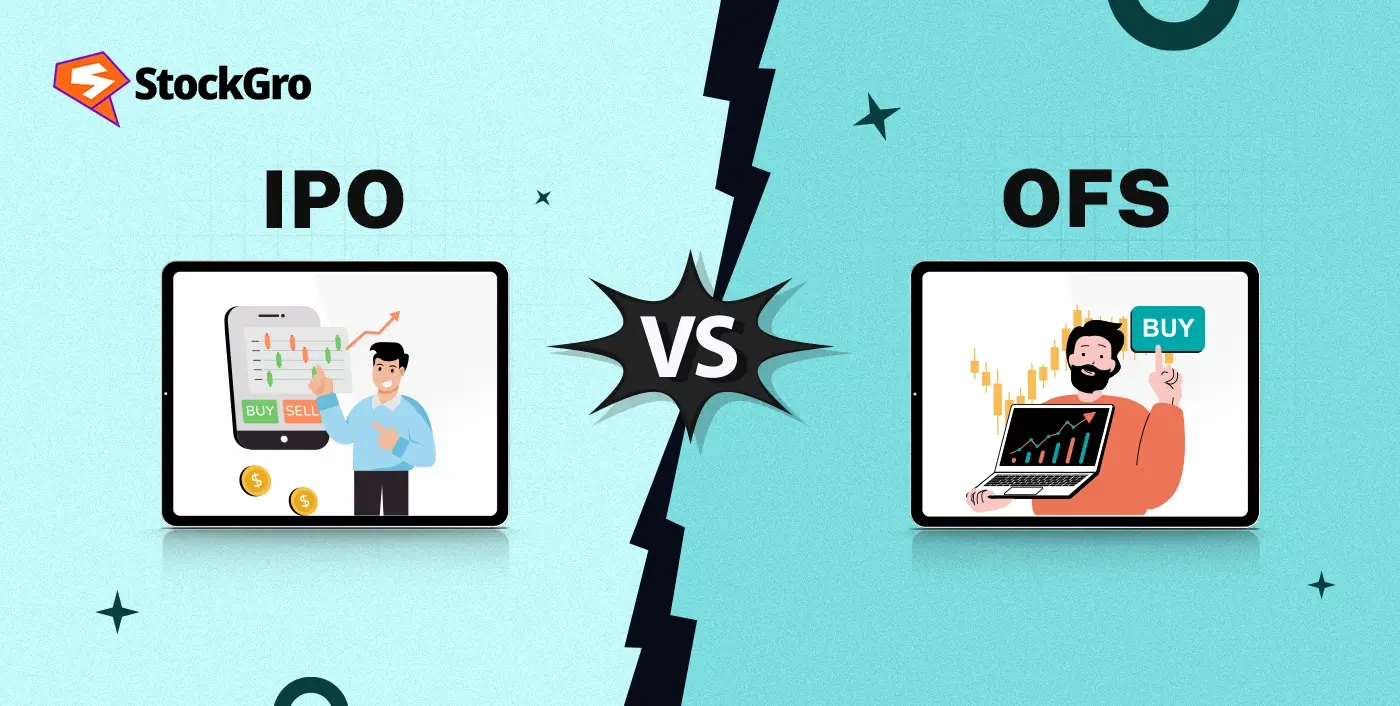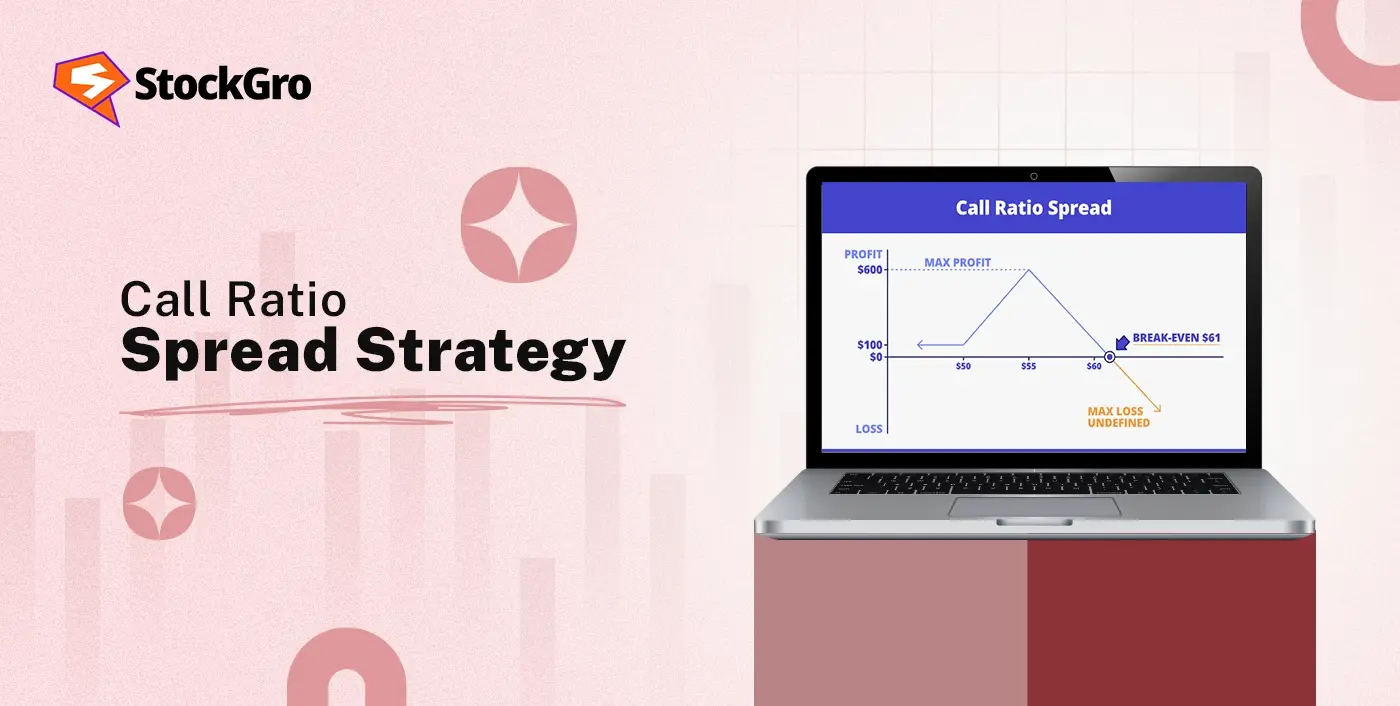
In strong bull markets, investors usually rush into every new listing, assuming that every offering is a new growth opportunity. However, this can be misleading. Whereas IPOs raise capital to be used for fresh expansion programs, OFS transactions are generally existing shareholders tinkering with their stake.
Confusing one with the other matters in investment decisions, especially when it comes to long term value. Investors with a comprehension of offer for sale vs IPO should be able to distinguish between raising money for business growth and promoter exits so that they look at market opportunities with the correct perspective. In this blog, we will explain the key differences so that you’ll see how each one works.
What Is an IPO?
An Initial Public Offering (IPO) is the process where a private company raises funds from the public by issuing equity shares and gets listed on stock exchanges. The aim is to generate capital for purposes such as expansion, debt repayment, or working capital. This transition from private to public requires regulatory approvals and adherence to exchange rules.
What Is an Offer for Sale (OFS)?
An offer for sale is a mechanism that lets promoters or early investors sell their stakes in the primary market. Unlike an IPO, it does not create new shares but transfers ownership of existing ones. Some companies combine fresh issues with an offer for sale in a single IPO, giving promoters an exit route while raising funds.
Offer for Sale vs IPO – Side-by-Side Comparison
IPOs means the issuance of new shares to raise capital for the company, where OFS involves the sale of existing shares by shareholders. Both routes let companies or shareholders bring shares to the public market, but the structure and outcomes vary.
Tabular Comparison of Key Differences
| Factor | IPO | Offer for Sale (OFS) |
| Purpose | Raise fresh capital for the company | Sell existing shares by shareholders |
| Share type | New shares issued | Existing shares sold |
| Proceeds | Go to the company | Go to selling shareholders |
| Dilution | Dilutes existing shareholders’ stake | No dilution of stake |
| Regulatory norms | Used to go public | Often to meet SEBI’s 25% public shareholding norm |
| Complexity | More complex, involves underwriting | Simpler, faster process |
| Risk | Low risk | High risk |
| Bid modifications | Investors can adjust bids but cannot cancel | Once submitted, bids cannot be changed or cancelled |
| Process complexity | Involves strict SEBI scrutiny and approval | Conducted via stock exchange bidding, simpler overall |
Regulatory & Procedural Differences
The SEBI framework defines clear rules for offer for sale vs IPO, which are as follows:
SEBI Guidelines for OFS vs IPO
- Eligibility and listing: OFS is allowed only for the top 200 listed companies, while IPOs require SEBI approval and compliance with ICDR eligibility norms before being launched.
- Notification and disclosure: In OFS, stock exchanges must be notified two working days in advance, while IPOs need a detailed SEBI-approved prospectus covering financials, risks, and promoter details.
- Share reservation: OFS requires 25% allocation for mutual funds and insurers and at least 10% for retail, while IPOs reserve around 35% of shares for retail investors.
- Pricing and sale mechanism: OFS follows a floor price system with bidding on exchange platforms in a single day, while IPOs use book-building or fixed pricing with a pre-declared price band.
- Purpose and proceeds: In OFS, proceeds go to existing shareholders selling stock, while in IPOs, funds raised become fresh capital available for company growth.
Timeline & Cost Implications
The differences in timelines and costs between offer for sale vs IPO include the following:
Time Frame Comparison
| Stage | IPO timeline | OFS timeline |
| Initial step | DRHP filing with SEBI and review (less than 30 days) | Company notifies stock exchanges 2 days before |
| Investor participation | Subscription window of 3–5 working days | Single trading day via exchange platform |
| Allotment & listing | Allotment and listing within T+3 days of closure | Bids, allotment, and settlement same day (T+2) |
| Total duration | About 6–12 weeks | One trading day after notice period |
Cost & Paperwork
The cost burden and paperwork requirements also vary significantly between IPOs and OFS, as discussed below:
- IPO filing fees with SEBI range from ₹25,000 to ₹3 crore, depending on issue size.
- IPO paperwork is extensive. DRHP, prospectus, financial disclosures, and compliance filings are needed.
- OFS costs are far lower, mainly brokerage charges of transaction value.
- Minimal exchange fees apply for intimation and settlement.
- No SEBI filing fees, prospectus, or underwriting costs are needed for OFS.
- Paperwork is limited to floor price disclosure and intimation to exchanges.
Real-World Examples
The difference between an offer for sale vs ipo becomes clearer when seen through latest market cases, such as the following:
IPO: Monarch Surveyors & Engineering Consultants
Monarch Surveyors & Engineering Consultants launched a ₹94 crore IPO in July 2025. The entire issue was a fresh equity offering, with no OFS component, making it a simple example of an IPO designed to raise new capital. The funds were meant for business expansion and working capital, displaying the purpose of an IPO, channeling money directly into the company. The issue was oversubscribed 24.40 times, showing strong retail and institutional participation. This example shows how IPOs help companies fund growth while also giving investors access to new equity.
OFS: Timex Group India
On the other hand, Timex Group India’s June 2025 transaction portrays the offer for sale mechanism. Its promoter sold up to 15% equity through an OFS at a floor price of ₹175 per share, a discount to market price. Unlike the Monarch IPO, no new shares were issued, and the company did not receive fresh funds. Instead, the OFS provided promoters a structured exit route while improving liquidity in the stock. This shows how OFS works as a shareholder divestment tool, complementing IPOs in India’s capital markets.
Market Insights & Recent Trends
Recent market movements show how IPOs and OFS complement each other, and the main insights are as follows:
- IPO fundraising reached ₹61,500 crore in the first seven months of 2025, marking a 70% increase from the prior year.
- The number of IPOs declined slightly, indicating larger average issue sizes despite global headwinds.
- Offer for Sale transactions formed nearly two-thirds of IPO proceeds, showing promoters’ and early investors’ preference to monetize stakes.
- The OFS share in IPOs hit a three-year high of 63.2% in 2025, showcasing high valuations and exit timing by promoters. This trend is seen as a natural step in market evolution, enabling liquidity for early investors and reinvestment into new ventures.
- IPOs expanded sector diversity, with health, industrials, real estate, and technology contributing strongly to the pipeline.
- Robust retail participation continued, showing sustained investor appetite across different market offerings.
- High profile OFS transactions by large corporate groups enhanced market activity and improved liquidity in the underlying shares.
Conclusion
In simple terms, IPOs and OFS are two different routes to bring shares into the market. An IPO adds new capital to the company, while an OFS transfers ownership from existing holders to new investors. Knowing this difference is important because both serve different needs in the market. IPOs are about raising money for business use, whereas OFS is about shareholder exits. Looking at offer for sale vs ipo this way helps investors stay clear about where their money is going and why.
FAQs
No, an Offer for Sale (OFS) involves existing shareholders selling their shares to the public. It does not include issuing any new shares by the company. OFS helps promoters or large shareholders reduce their stake without diluting the company’s equity or raising fresh capital.
In an IPO, the company benefits by raising fresh capital for growth, expansion, or debt repayment. In an OFS, the existing shareholders often promoters or early investors benefit by selling their shares to the public. The company itself does not receive any funds from OFS.
OFS is faster because it involves only the sale of existing shares, without the need for extensive regulatory approvals or capital raising procedures. IPOs require more time due to underwriting, prospectus preparation, marketing, and obtaining approvals, making OFS a quicker route to sell shares publicly.

